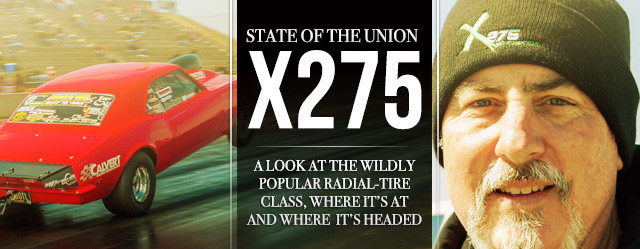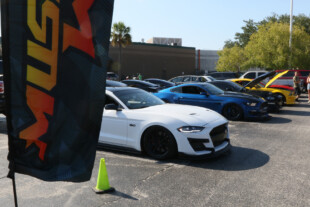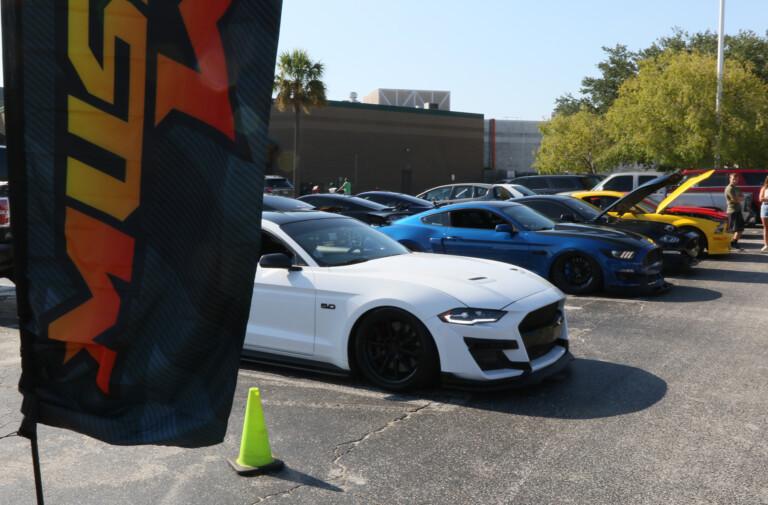Five years ago, Virginia native John Sears and a small group of fellow promoters and racers sat down around a table at a local Pizza Hut and drew up the plans for a category that would take the drag racing world by storm, becoming one of the quickest-growing and most populated categories in the sport’s history. Their goal was to promote 275 radial racing as an affordable alternative to the Outlaw Drag Radial class, with a strict focus on parity amongst the many allowable combinations. And borrowing a page out of the oval track racing handbook, their pet project became a platform used by race tracks and organizations all across the country, making it a true viral sensation unlike anything we’ve seen in quite some time.
X275, as we know it, was born out of a need to provide a more affordable entry into the wildly-popular world of radial tire drag racing, coming to be as an evolution of the Small Block Nitrous Shootouts that began in 2008. As we’ve all witnessed firsthand, the class has gone through its ebbs and flows over the last five years, gaining ground in some regions of the country while stagnating or even dwindling in others. Recent conversations on the web have suggested that perhaps the class has hits its peak and is on the downslope. And so five years in, we’re taking a look at where X275 has been and where it’s headed in the next five.
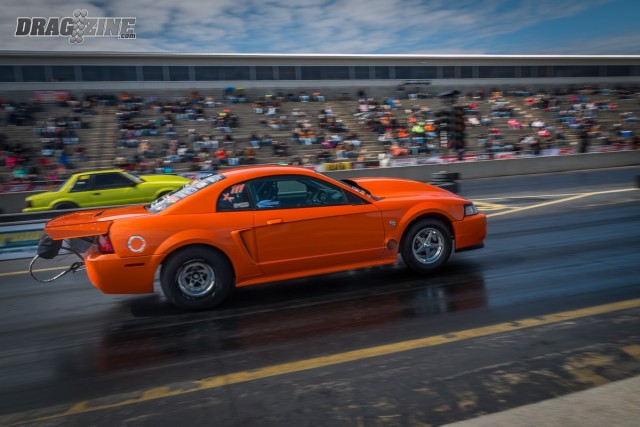
With major events bringing ever-larger payouts to the table, the cost of being competitive to win such events has risen sharply in the five years since X275 morphed from the Small Block Nitrous Shootouts of the late 2000s.
The Curse Of All Heads-Up Racing: Money
While Sears and Jason Miller from the Maryland International Raceway, Nate Pritchett with the Ultimate Outlaws Shootout, and Randy Van Raden — all of the individuals that were a part of that racing-series-on-a-napkin meeting five years ago — envisioned a category they could hold the reigns tight on, X275 was in no way immune to the virus that eventually permeates all heads-up racing categories: Money. The Haves and the Have-Nots.
Like a Gulf Coast Hurricane, the infiltration of money and the high cost of remaining competitive has certainly swept in and changed the landscape of X275, and while opinions differ, the category still remains one of the strongest in all of drag racing.
As with any class, the cream always rises to the top, so to speak, and guys understand that sometimes other people are willing to make more sacrifices and spend more money than they are… – John Sears
Sears believes the dynamic of the class has certainly changed, and part of that is that its new-ness has simply worn off. But its success has also brewed some of itsdownfalls, as higher purses have led racers with deeper pockets to come into the category and spend what’s necessary to win. As such, car counts at some venues have dwindled, and many who jumped onboard in the first couple of years have since moved on or dropped out.
“Any new class that’s ever been developed has a honeymoon phase, and X275 certainly went through that back when it was first created,” says Miller, who has been a supporter of the class from day one and whose facility has hosted monthly events since its inception. “Some classes go the distance and flourish thanks to good rules and good racing programs, just like Pro Modified has. Our fans still love the class — our spectator numbers haven’t gone down at all. However, the participation has definitely gotten smaller over the years, and I’d say that’s mostly due to the competition and what it takes to win.”

John Sears (pictured), Jason Miller from the Maryland International Raceway, Nate Pritchett with the Ultimate Outlaws Shootout, and Randy Van Raden were all part of a meeting at a Pizza Hut prior to the 2010 season that led to the birth of X275. Since that time, Sears has remained the class’ biggest cheerleader, committing his time and even his finances to promote the category.
Because Miller’s facility (now owned by IRG+ Entertainment) has regularly hosted the likes of Rich Bruder, Dean Marinis, Chris Evans, and Ron Rhodes — an all-star cast by anyone’s measure — Miller has seen firsthand the explosive growth in the class and the divide between upper and lower-tier competitors.
By The Numbers: Is X275 As Strong As Ever?
X275 racer Bill Robaey, who maintains a thorough database of statistics on the X275 class, documented 278 different racers who competed at least once during the 2014 season nationwide. Sears, while unsure of the accurate count, estimates 300 to 400 racers have competed at least once during the five-year run of the category, which would mark it among the single largest heads-up categories the sport has ever seen in such a timeframe.

Maryland International Raceway Vice President and General Manager Jason Miller has supported X275 from the very beginning, hosting monthly programs for the class at the formerly family-owned facility. Miller is still a fan of the class and sees no end to their involvement in the near future.
Donald Long’s Lights Out and No Mercy events, arguably drag radial racing’s biggest stage, have steadily drawn 50 to 60 cars, topping 60 on occasion over the five years. Like the car count, the gap from the Nos. 1 to 32 qualifiers has remained relatively consistent , as well, suggesting not much has changed from a competition standpoint in that time, other than the cars simply getting quicker and faster, from top to bottom.
The Maryland International Raceway was a hotbed of X275 racing early on and once routinely drew car counts upwards of 40, but now hovers around 20 regularly. As Sears points out, the chassis rules for X275 and Ultra Street are similar, which has allowed racers to fall back into the more affordable class if they so choose. Not surprisingly, growth in the Ultra Street class has in some ways paralleled the explosive changes in X275, as racers unable to “keep up with the Joneses” have moved on to more affordable pastures. He states, “As X275 continues to grow and become what it is, we still see those racers running in other classes, which is a good thing, because it’s all about getting racers to the track.”
We still get full fields, but it has shrunk some. There’s just a lot of X275 races now, and because you have Ultra Street, it’s pulled some of the cars away. – Jason Miller
“The class started out like gangbusters, and really took off,” says Rhodes, who has been a part of the class from the very beginning. “But like most classes, after the first two or three years, you get some serious players in there and it gets to the point where people have to decide if they want to keep going or step back.
“It kind of slowed down last year and maybe a little the year before, but I really feel like there’s a resurgence going on,” Rhodes continued. “There’s a lot more excitement about it. When they came out with Ultra Street it concerned me, because we lost some cars, but it seems like you’re hearing more and more X275 cars being built now. I think this year we’re really going to see this resurgence.”
Holding The Reigns
Without hesitation, Sears confirms he knew from the very start that, despite his best efforts, the influx of money and its effects would be a bridge he’d have to cross sooner or later. It wasn’t if, but when, and he believes some of the initial decisions made to reign in some of the power adder combinations to maintain parity may have inadvertently hurt the class in some people’s eyes, but they wanted to do something that others weren’t, and that was keeping things in-check. The last thing Sears wanted to do, however, was to slow anyone down substantially. That, he felt, would have damaging effects.
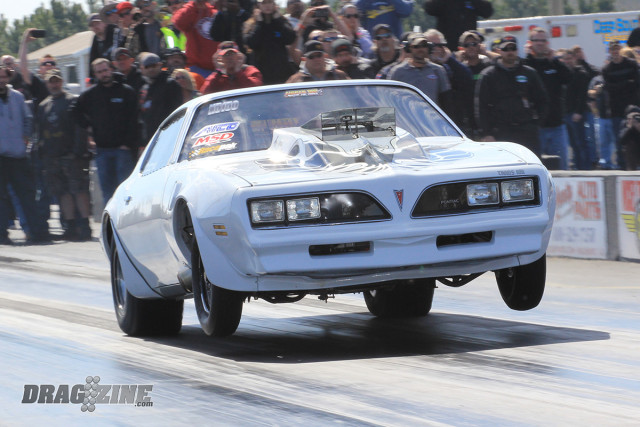
Donald Long’s Lights Out and No Mercy events have consistently drawn 50-60 X275 entries each year, making them the largest events the class typically sees all season long.
“You just can’t put some sort of limit or index on the class,” says Sears. “These guys work hard and try so many different parts to pick up just a couple of numbers, and it has a snowball effect. Racers are going to continue to move forward. The only thing that we can do as rulesmakers is slow the progress down long enough so that we can maintain parity.”
Rhodes, as one of the racers that’s put in that tireless effort to run fast with his combination, says he “has no interest in that,” when asked about reigning in the performance of the class across the board, thus confirming Sears’ thoughts. “You spend so much time and money to go faster. I understand as a whole to bring it back, but I just think people would be like me — once you go 4.40s and 50s, you don’t want to think about slowing down.”
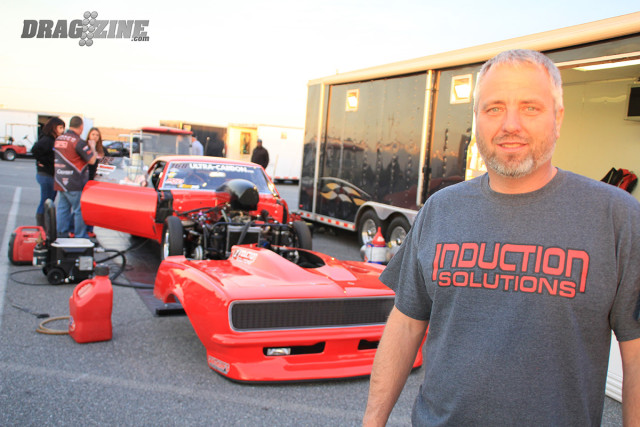
Like Sears and Miller, Delaware native Ron Rhodes has been a part of X275 from the very start, and has been among those making the sacrifice to consistently run at the front of the pack year in and year out with his leaf spring-equipped Camaro.
The biggest challenge for Sears, however, isn’t in finding parity in the combinations, but in the aforementioned haves and vave-nots. Two years ago, Rich Bruder went 4.55 with a blower combination — and that number, still to this day, hasn’t been eclipsed by another blower racer. Such a case serves as an example that some racers are simply well ahead of their peers, even given the very some combination. “We always try to look at who the very best in the class are and the potential they’re capable of achieving and the potential of the combination before we make any changes,” says Sears.
As an example of the challenge he’s faced in policing the many combinations to maintain parity — no one believed a small block nitrous car could go 4.50-anything when the class was founded, Sears points out, but already, Rhodes and his leaf spring Camaro have been 4.40’s in testing with that very combination.
You spend so much time and money to go faster. I understand as a whole to bring it back, but I just think people would be like me — once you go 4.40s and 50s, you don’t want to think about slowing down. – Ron Rhodes
In 2014, the overall average elapsed time was 5.03, while the top 16 of all power adders averaged 4.53-seconds. Even the top 100 racers averaged a quick 4.64-seconds.
“Like with any heads-up racing, there’s just a huge commitment. You get several guys that make that commitment, it’ll scare some people off,” says Rhodes.
Beyond the technology that racers have been able to use in their favor, Mickey Thompson’s Radial Pro tire, which was made available in early 2012, had a significant impact on the class. It was, in the in the eyes of many, a certifiable game-changer, allowing racers to do the unthinkable. While racers aren’t typically open to sharing the dollars and cents behind their programs, Rhodes admits the costs to compete have increased quite substantially over the years. In his case, it’s having several ring and pinions, a few different transmission ratios, a number of torque converters, and other parts in the trailer to find out what the car likes to be competitive on any track in any conditions. “The expenses are up, and they’re only going to keep going up,” says Rhodes. “You just can’t get away from that.”
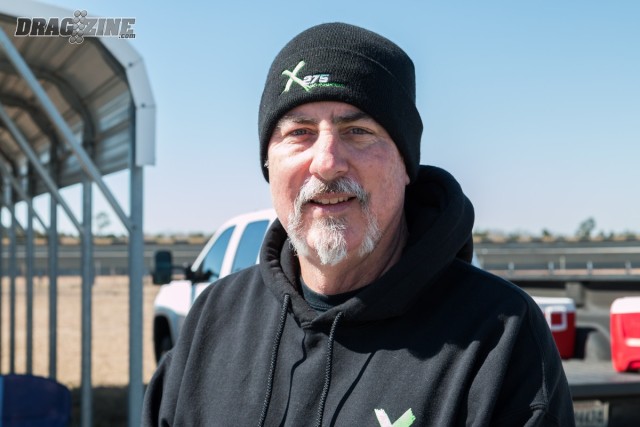
From offseason rules negotiations to race promotion, fielding phone calls on a daily basis, and tech inspection and even merchandise sales at the track, the role that John Sears has dutifully taken on is nearly a full-time job in and of itself, and it’s one that his peers, including Rhodes, say they certainly wouldn’t want to have.
Sears admits the faster the class gets, the more realistic the racers that are several tenths off the front have to be about their participation. If they’re not spending the cubic dollars and testing and working on their cars day and night, the next guy will be. And that hurts, he says, because it makes it more of a professional-type class in many racers’ eyes than a mere hobby. And that, he believes, is why the class has stagnated in some regards.
“This class is just a commitment like no other. I work on my car every day. That’s no bullshit. I work on it every day, whether it’s on the car itself or on the laptop looking at data,” says Rhodes. “It takes that kind of commitment. You have to go out and race and spend just a ridiculous amount of hours and time on it. That’s the only way to run up front — if you treat it like a hobby, you’ll never get there.”
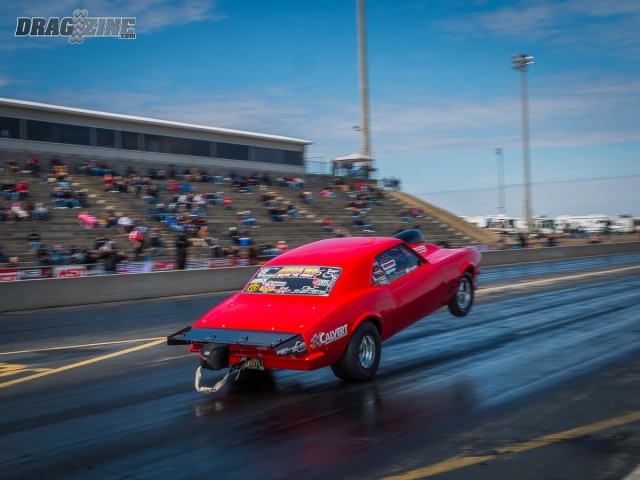 Sears and company have made a number of changes along the way to grow the class and bring about parity, from giving weight breaks to plate-type nitrous big block cars, allowing alcohol in smaller blower and turbo combos, or increasing turbo sizes, all with the goal of closing the gap between all the combos. As Sears tell us, he’s been working to manipulate the rules to drive racers to lighter-weight combos and close the gaps. He admits that in hindsight, he hasn’t always made the best decisions, and often those decisions aren’t met with agreement from racers, but he always does what he feels is right for the class as a whole.
Sears and company have made a number of changes along the way to grow the class and bring about parity, from giving weight breaks to plate-type nitrous big block cars, allowing alcohol in smaller blower and turbo combos, or increasing turbo sizes, all with the goal of closing the gap between all the combos. As Sears tell us, he’s been working to manipulate the rules to drive racers to lighter-weight combos and close the gaps. He admits that in hindsight, he hasn’t always made the best decisions, and often those decisions aren’t met with agreement from racers, but he always does what he feels is right for the class as a whole.
When asked if he believes X275 can truly be policed, Rhodes is hesitant in his opinion, confident that Sears will do the best he can, but at the same time, uncertain if such a thing is even possible. “In a way he has. He’s tried to keep it from going into total freefall, but man, that’s a tough job he has. I wouldn’t want that job for anything.”
Rhodes, likewise, is certain that the following the class has developed will keep it from going anywhere, anytime soon.
Miller echoed Rhodes’ words, discussing just how difficult a job it is to maintain parity in any class like X275. “John does the best he can with the rules, and he does a great job. It’s not on my plate to draft rules for the class, but it is tough when you see some dominant combinations out there and others are trying to keep up with it.”
This class is just a commitment like none other. I work on my car every day. That’s no bullshit. I work on it every day, whether it’s on the car itself or on the laptop looking at data. – Ron Rhodes
“I think X275 has indeed plateaued, but there are some new things that will be happening this year in new markets that should help perpetuate the class and move it forward,” says Sears.
Texas and Oklahoma in particular have seen considerable growth with X275 racing, and today, boast some of the largest events in the nation for the category. Sears is rather pleased to see these “pockets” of racers in different regions running strongly, and that, he believes, is a byproduct of the strong racers in the northeast that have continually raised the bar in the class, which has had a nationwide effect.
“We’ve seen that there are racers willing to race under a fairly limited set of rules and see how they stack up against some of the best racers in the country. There are plenty of cars still being built and plenty of tracks that have interest in the class.”
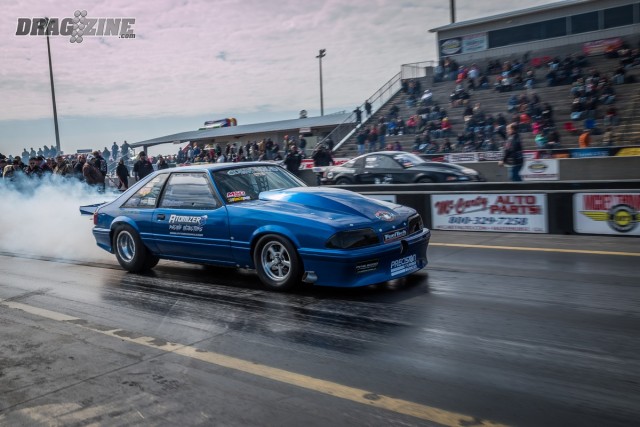
Like Rhodes, New Jersey natives Rich and Nick Bruder have been at the forefront of X275 since its inception, and whether its with a blower or turbo combination, the formidable family duo have pushed the envelope time and again, almost singlehandedly forcing changes in the rules in the name of parity.
Last fall, three different major X275 events were contested on the same weekend, and as Sears pointed out, there were more than 100 cars in total competing on that one weekend in Holly Springs, Cecil County in Maryland, and in Tulsa, Oklahoma, owing to the strength of the class on a national scale. Rhodes, in fact, has pored over race calendars and found that he could run his car somewhere virtually every weekend during the season, and that, he tells us, is really telling of the health of the class.
In Texas, the Evolution x275 series has drawn 30-plus cars and as many as 45 at its first events, and with the launch of the new Radial Tire Racing Association, those numbers are only expected to increase participation in the region.
Like a living, breathing child of his own, Sears gives his unwavering support of the class he created in any way that he can, from assisting with promotions and event tech-in’s, taking phone calls day and night from racers and race organizers, and even digging into his own check book to help the class financially. At the recent U.S. Street Nationals in Florida, Sears purchased a tech card to infuse some cash for the event, but did not compete.

Jared Johnston’s new Fox body Mustang is a shining example of the caliber of race cars that are still being built for X275 competition. Johnston’s machine made quite the entrance, as it ran the table in winning the class in its debut at Donald Long’s Lights Out 6 in February.
Despite all of the challenges that come with the role, from helping to promote events, making the tough calls on rules, and fielding both positive and negative calls from racers on a daily basis, Sears is adamant that he’s in this thing for the long haul.
“I’m in it for as long as I can afford to keep doing it and there are people willing to race the class. As long as there are racers, I’ll be willing to do what’s needed to get the word out to promote the class and continue moving it forward.”
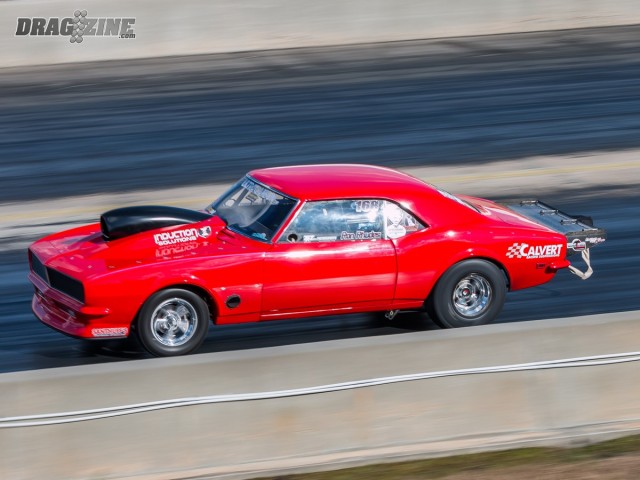
With a number of new cars being built and introduced to the class, Rhodes believes if X275 has slowed any, the numbers and the interest certainly don’t show it. If anything, he tells us, the class is seeing a resurgence, with its best days still ahead.
Miller, likewise, has no intention of eliminating MDIR’s X275 program in the future. “As long as we get full fields in the class, then we’ll continue to host it. We’ve never not had full fields. I love the guys and the cars, the group of people are great to work with, and they give us a lot of positive feedback on the race track, and we just enjoy having them. I don’t really see X275 ever going away, unless something changes to cause the car counts to drop. As long as they support us we’re going to support them.”
Opinions certainly differ on the overall state of X275, and like all heads-up classes, it has and will continue to evolve. While the picture may not remain the same from year to year, it’s hard to deny that the class is still strong — a point which the participation numbers fully support. And despite some downturn in long-established markets, the permeation of X275 into new areas of the country shows that the formula is there for success. From there, it’s up to Sears and the racers to make it continue to happen.
Rhodes, in closing, offered perhaps the most positive of responses: “I’ll go out on a limb and say it — I think X275 is alive and well, and I think it’s just going to get better.”



